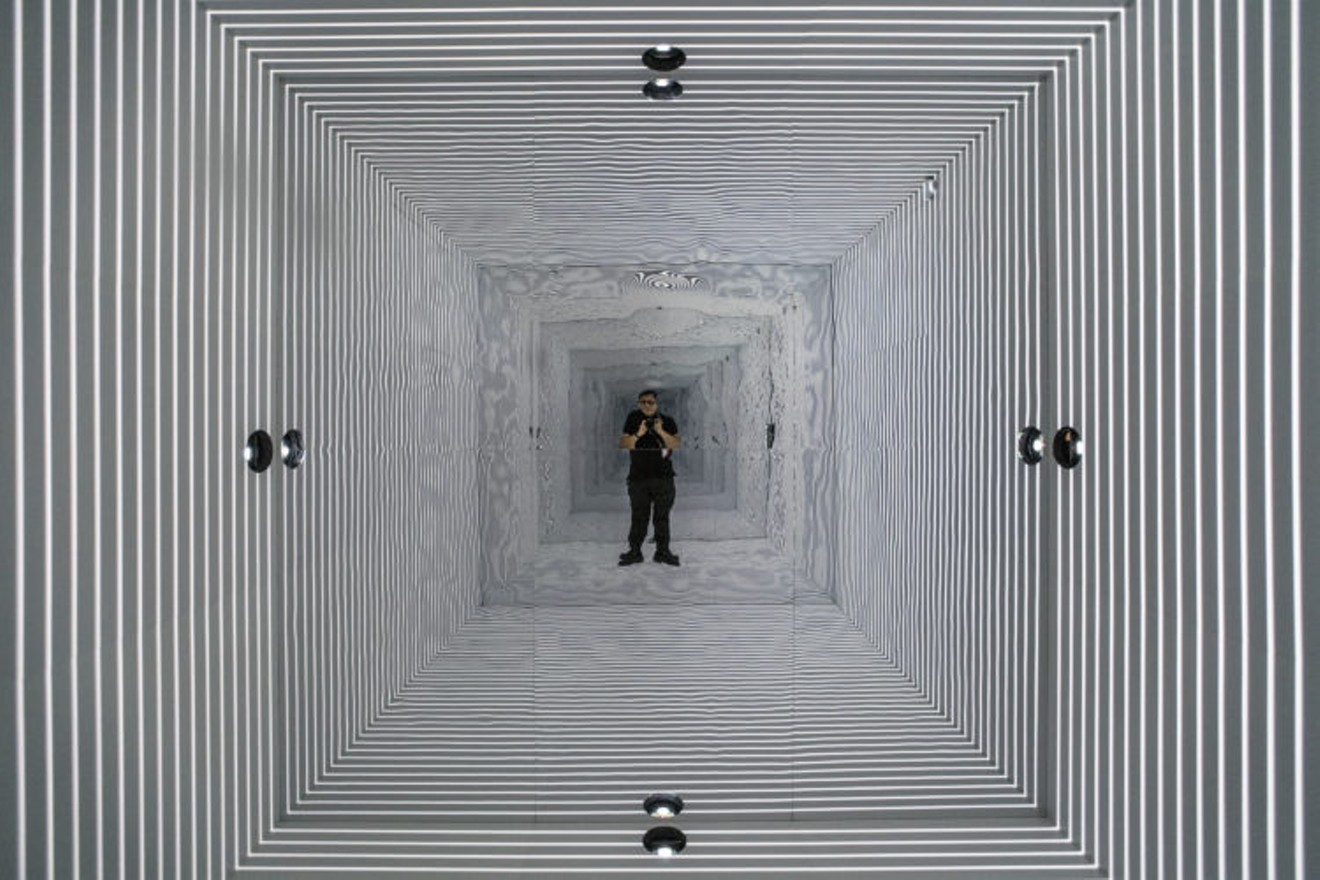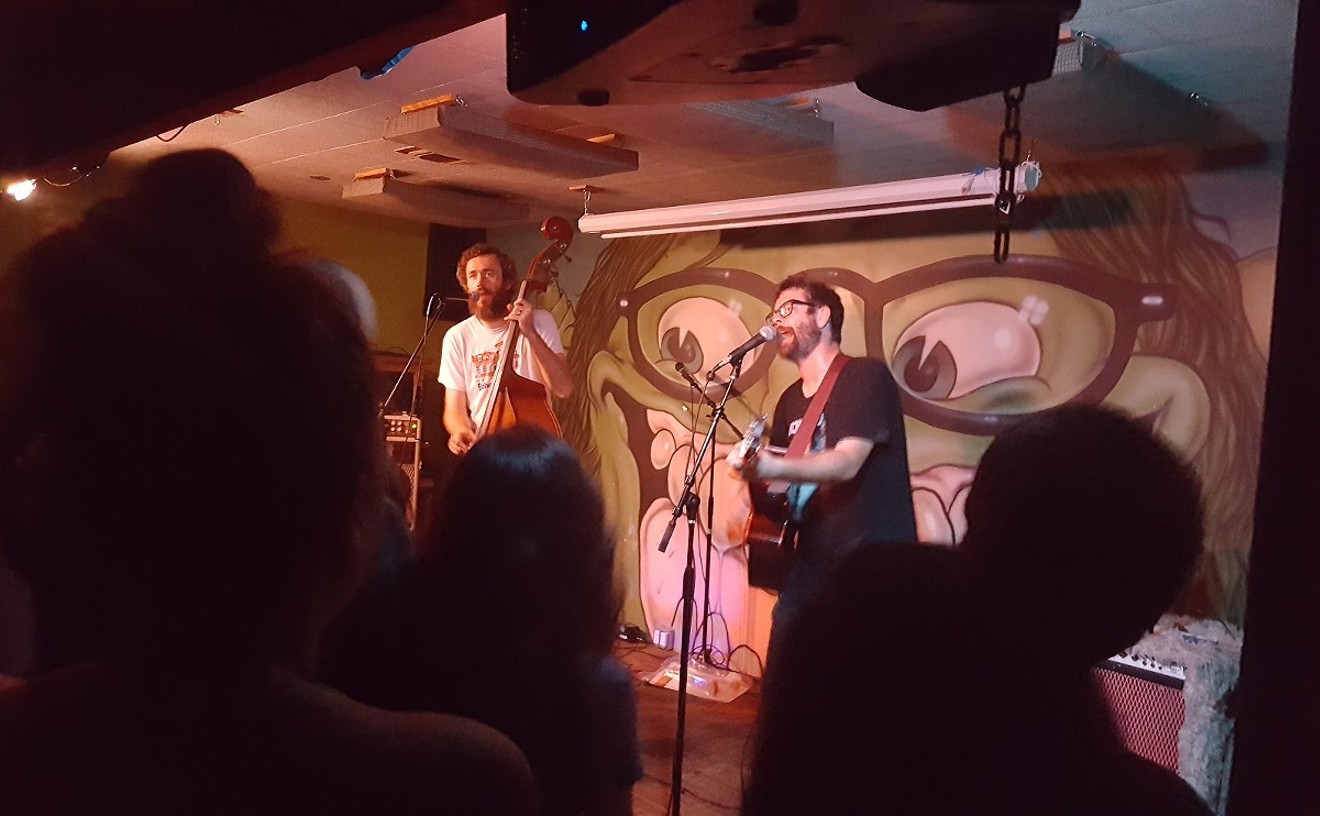Since premiering at the 2015 Istanbul Biennial, Refik Anadol’s immersive installation titled Infinity Room has been exhibited around the world. It comprises a 12-foot by 12-foot by 12-foot room filled with shifting patterns of light.
Infinity Room is on view at Scottsdale Museum of Contemporary Art, where the installation space is slightly smaller, through Sunday, September 30.
The museum is also presenting a free artist talk by the Turkish-born, Los Angeles-based creative on Thursday, August 30. But we chatted with him by phone ahead of time, to learn more about Anadol's unique art practice.
Here's a look at what he shared with us.
Why did you gravitate towards media arts?
I’ve always loved imagination and daydreams. Media really started to shape me when I was 8 years old. I got my first computer, a Commodore PC. So I jumped into the world of technology through my parents. And I saw the film Blade Runner. I enjoy science fiction as a field of thinking, and love speculating about the near future, when the computer transforms to something else.
What’s the big question you’re trying to answer?
As an artist, I’m exploring how we as humankind transform ourselves by knowing or not knowing, and how technology transforms us.
What materials do you work with?
I’m using data a lot. We have so much data, but we’re leaving so much of it behind us. I want to know how we can make meaning from that. I use data to make images that help people imagine a whole new world.
What sets Infinity Room apart?
It’s an immersive piece that engages with audiences. It doesn’t have boundaries like other artworks. It’s been super meaningful to travel with it, and see people react to it. Infinity Room is an abstract experience of time and space, so anyone of any age or background can get something from it. The piece provides a temporal disconnection from the real world, and adds new meaning for memories.
What’s a typical day for you?
I’m really focused on my studio and my team. I have about 12 people working in L.A. every day, and I also travel a lot. I get up and 8 a.m. sharp and try to get to the gym for a simple workout. Sometimes I’m in the studio 16 hours a day, including some weekends. My team is everywhere, including London and Istanbul, so I have to be sure everyone is aligned with the vision. I work with a lot of computers, about 50 or more. My studio space is about 4,000 square feet.
What are you working on now?
I’ve been working for nearly a year on the Walt Disney Concert Hall that Frank Gehry designed in Los Angeles. I’ll be using the exterior as a canvas for WDCH Dreams, which opens on September 27 as part of the centennial celebration for the L.A. Philharmonic. I’m using every single archive of their performances there to create an algorithm for projections onto the steel exterior. I’m using light, data, and machine intelligence to give the building consciousness, working with the idea that the building remembers who built it.
How is technology impacting humanity?
Two things really make me think much more deeply. One is displacement, or the way that machines are so much into us that they make us disconnect from space. I don’t know how we can counter that attack. The other is AI or artificial intelligence, which can put us in a much richer quality of thinking. But we have to be careful to avoid a sense of displacement.
Where do you get your inspiration?
I’m very excited about cinema. I watch a lot of films, read a lot, and explore a lot of architecture. I’m intrigued by the limitations of the physical quality of life. I love monumental spaces, and I think archives are one of the most important physical spaces, because that’s where information turns into knowledge.
What should education look like moving forward?
Human imagination is getting bigger, and the academic world can be slow. We need more self-education, so people become their own teachers. We need to teach people how to learn, and the rest is an individual journey.
How do you imagine your own future?
There is so much beyond the universe that we haven’t even dreamed yet. I have many plans about the universe beyond earth. There are a lot of ideas I would love to explore, including using space as a canvas.
Artist Talk: Refik Anadol. 7 p.m. Thursday, August 30, at Scottsdale Museum of Contemporary Art, 7374 East Second Street, Scottsdale; 480-874-4666; smoca.org. Admission is free, Visit smoca.org.
[
{
"name": "Air - MediumRectangle - Inline Content - Mobile Display Size",
"component": "18478561",
"insertPoint": "2",
"requiredCountToDisplay": "2"
},{
"name": "Editor Picks",
"component": "16759093",
"insertPoint": "4",
"requiredCountToDisplay": "1"
},{
"name": "Inline Links",
"component": "17980324",
"insertPoint": "8th",
"startingPoint": 8,
"requiredCountToDisplay": "7",
"maxInsertions": 25
},{
"name": "Air - MediumRectangle - Combo - Inline Content",
"component": "16759092",
"insertPoint": "8th",
"startingPoint": 8,
"requiredCountToDisplay": "7",
"maxInsertions": 25
},{
"name": "Inline Links",
"component": "17980324",
"insertPoint": "8th",
"startingPoint": 12,
"requiredCountToDisplay": "11",
"maxInsertions": 24
},{
"name": "Air - Leaderboard Tower - Combo - Inline Content",
"component": "16759094",
"insertPoint": "8th",
"startingPoint": 12,
"requiredCountToDisplay": "11",
"maxInsertions": 24
}
]













